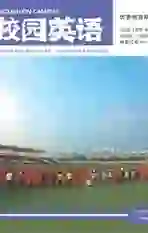Change of translation teaching contents in the information age
2016-05-14倪宇红
【Abstract】the development of information technology, especially that of multimedia and network communication technology, has offered good material conditions and effective support means for reform of translation teaching. The teaching contents of translation have undergone profound changes. This paper discusses these changes and advocates that teachers should adapt their teaching to the requirements of the information age.
【Key words】information age; technological development; translation teaching contents
1. Introduction
The development of information technology, especially that of multimedia and network communication technology, has offered good material conditions and effective support means for reform of education. However, the information age has not only brought about opportunities and inspiring prospects, but also challenges. On the one hand, the informationization of society, science and technology has greatly increased the possibility of giving into full play functions of various modern media in translation as well as translation teaching; on the other hand, educators should consider how to apply the information science and technology, most advanced equipment and scientific research findings to translation teaching and research.
2. The changes in the contents of translation teaching
2.1 The change of translation principles
Since we entered the information society, the quantities of the translation of practical articles such as commercial documents, product pamphlets, news, laws and financial articles, and so on, have been rapidly increasing. And the aim of translation has changed to absorbing information as much as possible. The importance of original authors and the source texts has been declining. The responsibility of translators is meet the readers requirements and be loyal to the clients, that is, to be responsible to the users of the translated versions and benefit the readers of them. The traditional belief of “being loyal to the original author” is challenged. The standards of translation of various contents must be clarified when teaching translation to students.
2.2 Paying more attention to the teaching of translation variation
In the information age, translators are often required to properly condense and select the source texts, that is, to make selective translation, translation and editing, translated narration, etc. So far, in translation teaching, we have seldom paid close attention to the cultivation of these translation variation skills. Thus students are often at a loss when they are first faced with this kind of treatment of information after they begin to work, because selective translation or translated narration is more difficult than full translation. It requires translators to summarize the original text on the basis of complete and thorough understanding of it and to iterate the contents of it in an accurate and concise language. Translation teaching should lay more emphasis on the cultivation of information summarization abilities. At the same time, students should also be taught how to process, abstract, condense and rearrange overseas primary documents so as to produce secondary and tertiary documents which may better serve the scientific circles. Translation teaching should shoulder the responsibility to cultivate the students abilities in these aspects and translation variation should be added to syllabuses, textbooks and translation tests.
2.3 The shift of focus from the teaching of translation of literature to various kinds of practical materials
Under the influence of the literary school of translation in early days, the traditional translation teaching of our country is focused on literary translation. After entering the information age, the translation demands for the practical materials in such respects as company prospectuses, commercial documents, product propaganda materials, description of products, advertisements, news, law, finance, etc. increase sharply. The practicability issue of translation is becoming more and more prominent. Under such circumstances, translation teaching should adapt to the change of market demand and pay more attention to translation teaching of practical materials.
2.4 Diversity of the forms of source materials
Traditional translation sources were largely written language, while in the information age, more and more other forms of information have entered communication. Traditional written sources such as books, newspapers and magazines, etc, are giving way to non-print sources, such as cassette tapes, video tapes, CDs, DVDs, radio, television, films, e-books, etc. The working languages of translators no longer include only natural languages, but also machine languages and audio-visual symbols. Therefore, in translation teaching, students should not be only taught how to translate traditional written materials, but should also be taught how to translate the source materials in a new form of media and various non-verbal images, symbols, etc. Apart from the translation of the contents, packing should also be taken into consideration. For instance, when translating an advertisement, the translator should also design the layout, pattern, font, etc, so as to make it approximate the effect of the original.
2.5 Improving students ability to utilize advanced technology
The information age has put forward higher demand for translators not only to possess sound grounding in basic skills of translation, but also to grasp the advanced technology to assist in their translation work. Modern translators should be familiar with information technology in order to improve translation efficiency. With the flourishing development of machine translation, post editing based on MTM and cloud translation should undoubtedly be included in current translation teaching.
3. Conclusion
In a word, informatization and technological development have had a far-reaching effect upon translation teaching contents. Translation teachers need to be fully aware of these changes and adapt their teaching to meet the demand of the information age.
Reference:
[1]庄智象.关注翻译研究三个“转向” 推进翻译学科专业建设[J].外语教学,2014(6):91-94.
[2]冯全功,张慧玉.全球语言服务行业背景下译后编辑者培养研究[J].外语界,2015(1):65-72.
作者简介:倪宇红,(1972.10-),女,硕士,副教授,主要研究方向英语语言文学与英语教学。
